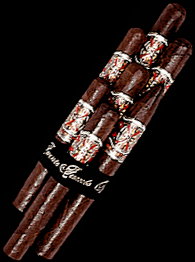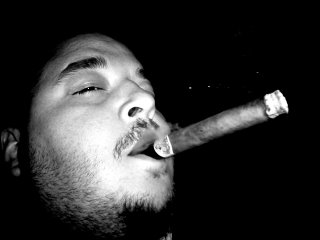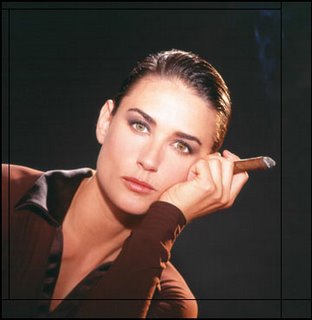 Smokin' Up The Cigar World
Smokin' Up The Cigar WorldJonathan Drew Takes Drew Estate To New Levels
In the sometimes stodgy world of cigar aficionados and manufacturers, Drew Estate stands out as a forward-thinking, edgy company that has set the cigar world on its ear, and redefined the specialty cigar market.
The company, founded in 1995, manufactures ACID brand cigars. Featuring exotic tobacco blends never before seen by the industry, the cigars have quickly become a favorite among both newbies and serious cigar smokers. Next week, Drew will unveil its newest creation, ACID Five, to the world at Maxwell & Dunne's Steakhouse in Plainview (Maxwell & Dunne's is operated by the publishers of the Long Island Press). ACID Five is a special cigar rolled with an exotic 5-year- old limited blend of tobacco.
The Cigar Lounge at Maxwell & Dunne's, site of new Acid Five release.
The company is the vision of Bay Shore native Jonathan Drew, who founded Drew Estate with college friend Marvin Samel. The company has come a long way from its humble roots in a New York City apartment, where Drew and Samel began to experiment with new flavors and blends that would become the signature of the Drew Estate operation. The company now produces millions of cigars in a given year, and there is no end in sight to its growth.
That is good news, because the specialty cigar market is on a roll. "The [industry] is doing extremely well," says Tom Wallace, CEO of TNG Cigar Company. "ACID is really making a mark. Anything different is great. They have a great market, a well- made product, and the company's advertising and marketing are incredible."
Wallace, who only sells cigars he manufactures, knows Drew Estate well. He believes the company has a good bead on the market. Currently, Wallace sells seven flavored cigars, and is currently working on new offerings.
Drew Estate has several cigar lines, including ACID, Natural, Ambrosia, Subculture, Industrial Press and La Vieja Habana. The aggressive marketing approach that Drew has implemented has helped each brand reach cigar enthusiasts and leave lasting impressions.
"Drew Estate definitely holds a unique position [in the industry]," says Ted Hoyt III, editorial director of Smoke magazine. "They do not just do straight flavored cigars, but rather 'botanical infusion,' which puts them in their own category."
One of the earliest breaks for Drew Estate cigars came with the development of a signature exclusive cigar for its retail location at the World Trade Center Mall. The cigar was an instant hit, a tobacco blend unlike any other in the industry at the time. The next challenge was finding a vehicle to sell Drew Estate cigars. After beefing up the sales staff, Drew took to the road, visiting city after city, going inside cigar stores and pitching their product. The efforts paid off, and by 1997 Drew had choices to make: Either stay the same size, or move the operation to Nicaragua. Drew chose the latter, and operations are conducted out of the South American country to this day.
It wasn't easy running the company from Nicaragua. Drew worked day and night in the factory, proving his dedication to the art of cigar making and earning the respect of wary local tobacco growers.
Around this time, Drew was once again experimenting with his cigars, adding ingredients like coffee and rose petals, oils, herbs and other organics. Drew Estate began to import tobacco from all over the world to achieve the unique flavor that Drew had envisioned when he started the company. It took more than a year before ACID cigars were ready for the world, and once released they became one of the most exciting smokes on the market.
Wallace says the flavored cigars may not be for purists, but the younger crowd can't seem to get enough of them. "They love them. They appeal to more people, too, including women," says Wallace.
Many of the big companies are following the example of Drew Estate. "I see more of the manufacturers who in previous years had never gotten into the specialty biz now coming out with flavors, and those that had flavors are expanding," says Bob Olesen of Smoke and Smoke Shop magazines.
ACID Five promises to up the ante for Drew Estate. As Drew and his colleagues have shown, the company will continue to innovate. But for the moment, Drew is excited about the new release. You can be sure that he won't rest on his laurels for too long.
-
Little Browww.schwartzbroscigars.com
 Fuente Fuente Opus X
Fuente Fuente Opus X

